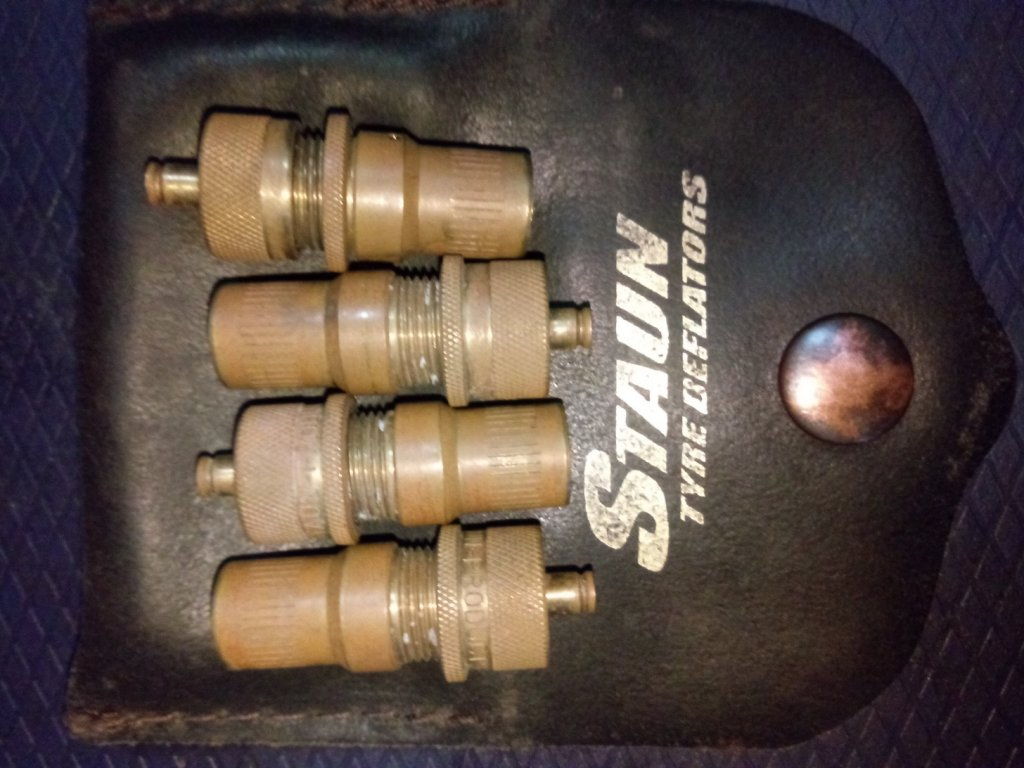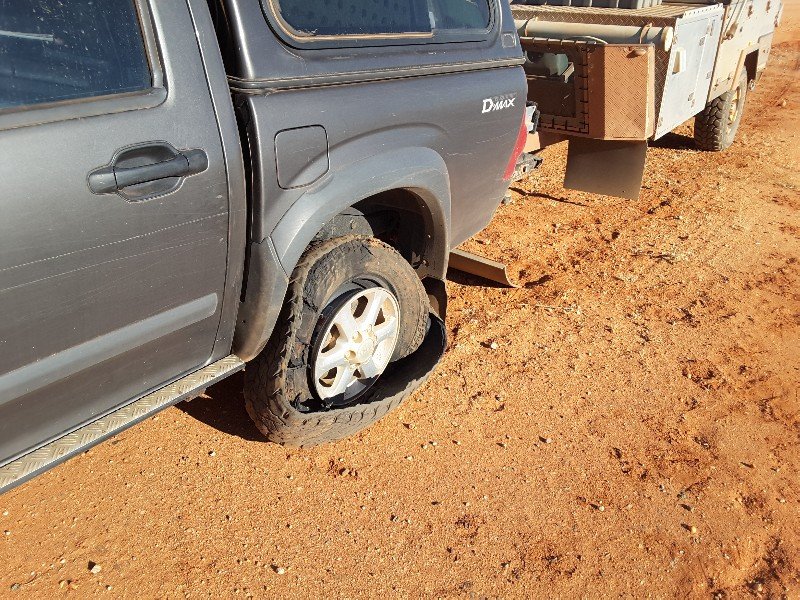- Joined
- Sep 4, 2014
- Messages
- 8,938
- Reaction score
- 6,789
G'day folks seeing as I can't get about I decided to buy another set of ARB Tyre Gauges to use with the Twin Beast, I already had one set for the Single which all proved to be really good and spot on between the three of them, First off is their blue inflator Annie Log version or how ever you spell it and then The Red Ezi Deflator closely followed up with the 3.5" Low Pressure Gauge that goes from 0 to 50 in 1psi steps much to my surprize they are all right on the money,
After buying the Twin Pump and the Accessories Bag I thought I'd add another set of gauges, One for each pump, anyway I got another Blue inflator free when I bought the Twin so I just bought another 3.5" Low Pressure gauge @15.00/$27.15c and another Ezi deflator which cost me 40.80/$75.48c, with a total of 6 gauges in all I did a side by side and they were all absolutely spot on except Number 2 Low Pressure Gauge which is off by 0.5 PSI, Bugger ] Not to worry I can live with that or if it annoys me I can adjust it Que Sara Sara,
Not to worry I can live with that or if it annoys me I can adjust it Que Sara Sara,
Also I bought another Hoes kit giving heaps of spare bits and another 6 metre length of hose so I have two sections to use with either compressor or with the 4 in total + 24m/80ft of Air Line.
While I was waiting for the delivery man I got on ebay and I saw cheap Deflators @ 5.99 + 1.99 postage $14.73 mmmm ?? Click click and I bought 2, they weren't meant to be here til the end of next week YarHooooooooo more Toys :inlove: Anyways after testing the ARB's out I though I'd give em a look see, First one absolutely spot on with the ARB's " Happy Day's" Number 2 off by 0.5psi with a quick adjust of the dial it too is spot On.
I have seen the ARB Ezi Deflator on Aussie web sites for up to $82.00 and I have seen it over here for over $100 also so it just goes to slow there are scalpers every where. But if you don't want to spend that much on one this cheapie is just as good and comes in a foam filled hard case with a spare Valve key and 4 valve caps and unlike the ARB version it has a needle rest button on the side at an 8th of the price,
Please note that all of these Gauges go up in 1 "ONE" psi steps.
This is the ARB 3.5" Low Pressure Gauge.
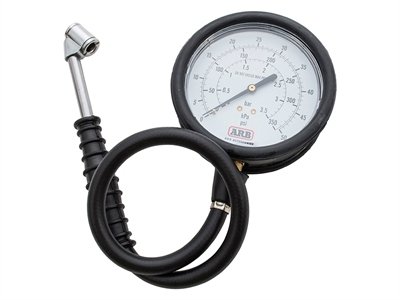
ARB Annie Log "Blue"
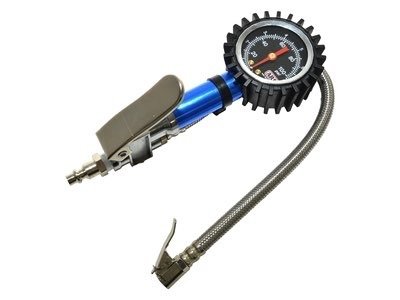
ARB Ezi Deflator
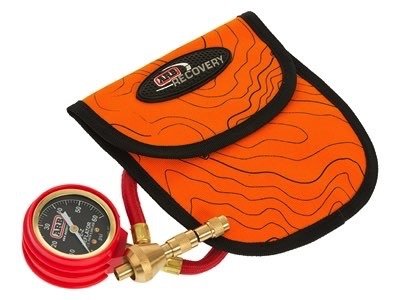
And this is the Cheap Alternative to the Ezi Deflator Note that the Gauge goes up to 75psi where as the ARB version only goes up to 60psi so if you camper or what ever uses over 60psi then you are better off with the cheapie. And to be honest I'd swear these two are made at the same factory. Because this one has the same Dial as one of ARB's other Gauges that I have seen, all the fittings are very snug and perfectly finished, and to be honest $14.73c Vs $75.48c If I was doing it all over again and know what I now know, I know which one I'd be buying first. Not to worry because a now have a set to measure others by.
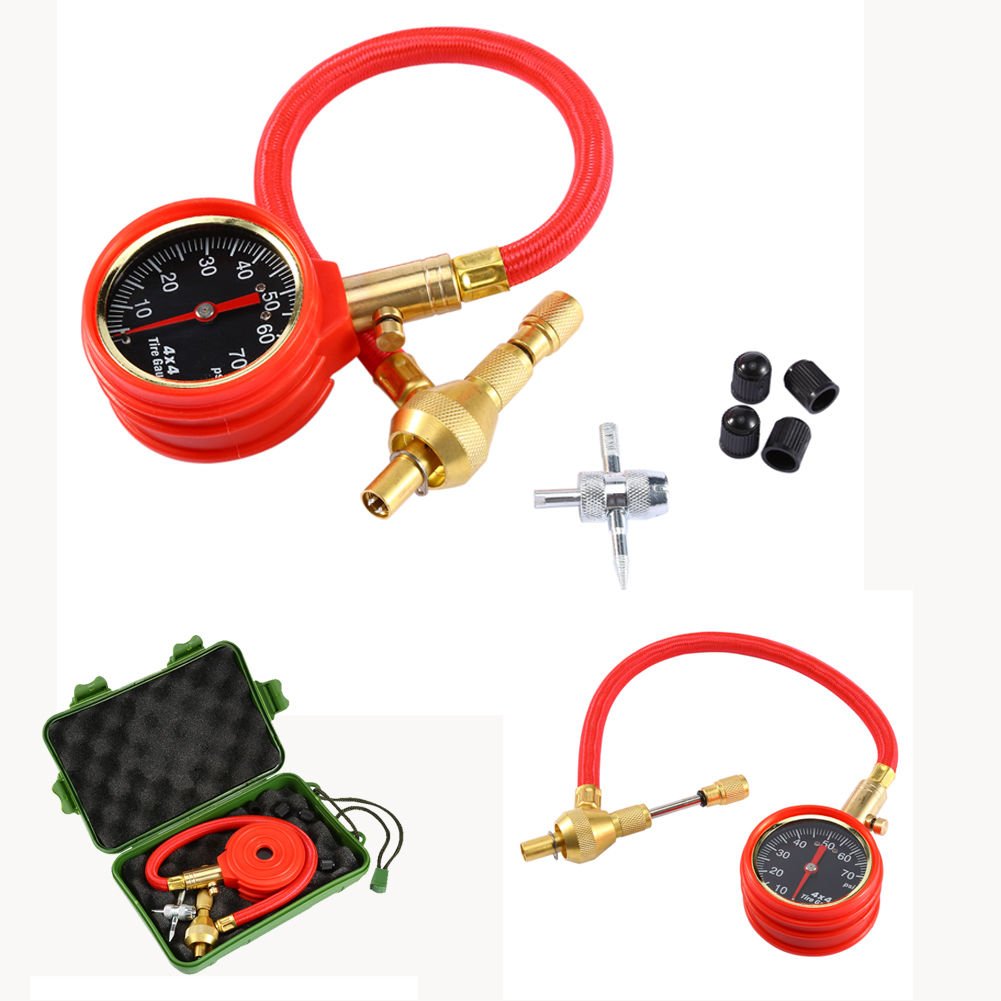
After buying the Twin Pump and the Accessories Bag I thought I'd add another set of gauges, One for each pump, anyway I got another Blue inflator free when I bought the Twin so I just bought another 3.5" Low Pressure gauge @15.00/$27.15c and another Ezi deflator which cost me 40.80/$75.48c, with a total of 6 gauges in all I did a side by side and they were all absolutely spot on except Number 2 Low Pressure Gauge which is off by 0.5 PSI, Bugger ]
Also I bought another Hoes kit giving heaps of spare bits and another 6 metre length of hose so I have two sections to use with either compressor or with the 4 in total + 24m/80ft of Air Line.
While I was waiting for the delivery man I got on ebay and I saw cheap Deflators @ 5.99 + 1.99 postage $14.73 mmmm ?? Click click and I bought 2, they weren't meant to be here til the end of next week YarHooooooooo more Toys :inlove: Anyways after testing the ARB's out I though I'd give em a look see, First one absolutely spot on with the ARB's " Happy Day's" Number 2 off by 0.5psi with a quick adjust of the dial it too is spot On.
I have seen the ARB Ezi Deflator on Aussie web sites for up to $82.00 and I have seen it over here for over $100 also so it just goes to slow there are scalpers every where. But if you don't want to spend that much on one this cheapie is just as good and comes in a foam filled hard case with a spare Valve key and 4 valve caps and unlike the ARB version it has a needle rest button on the side at an 8th of the price,
Please note that all of these Gauges go up in 1 "ONE" psi steps.
This is the ARB 3.5" Low Pressure Gauge.

ARB Annie Log "Blue"

ARB Ezi Deflator

And this is the Cheap Alternative to the Ezi Deflator Note that the Gauge goes up to 75psi where as the ARB version only goes up to 60psi so if you camper or what ever uses over 60psi then you are better off with the cheapie. And to be honest I'd swear these two are made at the same factory. Because this one has the same Dial as one of ARB's other Gauges that I have seen, all the fittings are very snug and perfectly finished, and to be honest $14.73c Vs $75.48c If I was doing it all over again and know what I now know, I know which one I'd be buying first. Not to worry because a now have a set to measure others by.





